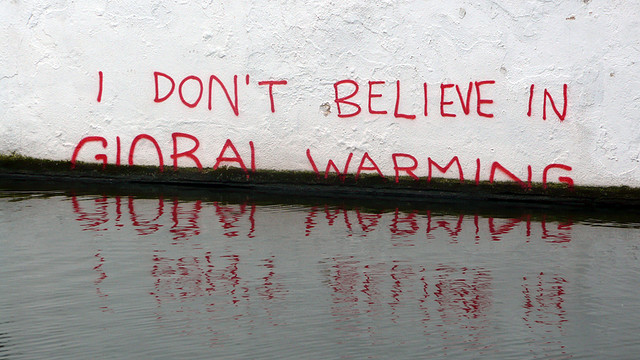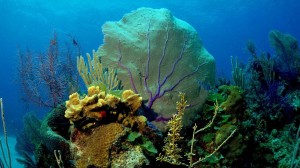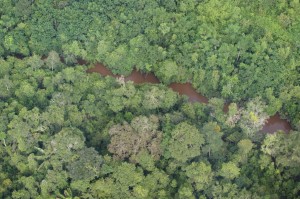Search Results for Tag: climate
What a +4° Celsius world would look like
 The next climate conference is to start in Doha, Quatar this Monday – but already before it is started, participating parties are not really optimistic about a practical outcome.
The next climate conference is to start in Doha, Quatar this Monday – but already before it is started, participating parties are not really optimistic about a practical outcome.
This is especially striking when set into relation with the urgence of the world’s situation: First opinions come up claiming [german languange link] that it is not realistic anymore to limit global warming to plus two degree Celsius when compared to predindustrial level.
In this context, the World Bank released a new report last week. Written by the Potsdam Institute of climate change, they again outline what is to happen with the worlds (eco)systems in a +2 degree-world – and forecast what is to happen in a +4-degree world.
Put in simple matters: Consequences of additional four degrees won’t just be an extension of what is felt at two degrees. Naively one could guess that as temperature doubles from two to four degrees, effects “double” as well. But that is not the case. They amplify even more intense.
To give you an impression of what to expect in a +4 degree world, we have summarized the most important facts.
![]() read more
read more
New Directions for the Brazilian Amazon
The Amazon rainforest is spread out over nine national states of the South American continent. As trees bind carbon dioxide (CO2), the Amazon forest plays a crucial role in climate protection measures. Home to 60 percent of the world’s rainforest area, Brazil contains the largest part of this precious ecosystem.
GLOBAL IDEAS asked Brazilian forest activist Pedro Soares to write a guest article for our blog. Pedro stresses that we can only protect the Amazon by providing an adequate income to those living in the forest.
By Pedro Soares
The Brazilian Amazon area covers about 50 percent of Brazil’s territory. That is a total an area of 4,196,943 square kilometers.
The biggest stock of tropical forest in the world has always been seen as a barrier to regional economic development. In fact, deforestation occurs mainly due to an economic rationale: the forest does not provide sufficient income for landowners and forest dwellers, when compared to the income they could obtain for more profitable activities such as logging, agriculture or cattle ranching. But the lack of an economic value for the stand forest is the main caveat towards the promotion of forest conservation policies and programs.
![]() read more
read more
Into the sea, you and me – Biodiversity Day 2012 focuses on marine life
 What’s going on under the surface of the sea? That’s what this years International Day for Biological Diversity, or the Biodiversity Day, is about. So the question today is: “How Much Life Is in the Sea?” Over the last decade scientists from around the world tryed to answer that question. The project was huge! The effort involved 2,700 scientists from over 80 nations, who participated in 540 expeditions around the world. They studied seawater and probed the deepest, darkest depths of the ocean, they sailed tropical seas and explored the arctic ice. And the scientists were successfull – after the trip they added 1,200 species to the known roster of life in the sea. And there’s no end to it in sight; scientists are still working through another 5,000 specimens to determine whether they are also newly-discovered species. You ask for the number of known marine species? Well, of course it’s increased to now around 250,000. In its final report, the Census team suggested it could be at least a million. Some think the figure could be twice as high.
What’s going on under the surface of the sea? That’s what this years International Day for Biological Diversity, or the Biodiversity Day, is about. So the question today is: “How Much Life Is in the Sea?” Over the last decade scientists from around the world tryed to answer that question. The project was huge! The effort involved 2,700 scientists from over 80 nations, who participated in 540 expeditions around the world. They studied seawater and probed the deepest, darkest depths of the ocean, they sailed tropical seas and explored the arctic ice. And the scientists were successfull – after the trip they added 1,200 species to the known roster of life in the sea. And there’s no end to it in sight; scientists are still working through another 5,000 specimens to determine whether they are also newly-discovered species. You ask for the number of known marine species? Well, of course it’s increased to now around 250,000. In its final report, the Census team suggested it could be at least a million. Some think the figure could be twice as high.
Share our videos
An easy way to spread the word about GLOBAL IDEAS is to simply embed our weekly video reports into your Facebook account or your own homepage.
Here is an example of how the video will look like after you have embedded it into your own homepage:
To find the specific embed code for one of our more than 100 video reports head over to our GLOBAL IDEAS stream within Deutsche Welle’s Youtube channel and follow the instructions below:
1) Find the video you want to share
2) Click the “share” button below the video
3) For sharing the video on Facebook, the short code you see now is sufficient. Just copy and paste it to your Facebook wall.
For embeddingt the same video to your own homepage, you need the HTML-code. To get this, simply click “embed”. Then just copy and paste it into your website’s CMS.
Spread the word!
Help us spreading good ideas to combat climate change! Simply place a link to our GLOBAL IDEAS homepage, where we showcase a new, innovative climate project every week.
To spread the word, just choose an image from below, copy the code snippet from the white field and paste it into your website’s CMS.
![]() read more
read more









Feedback